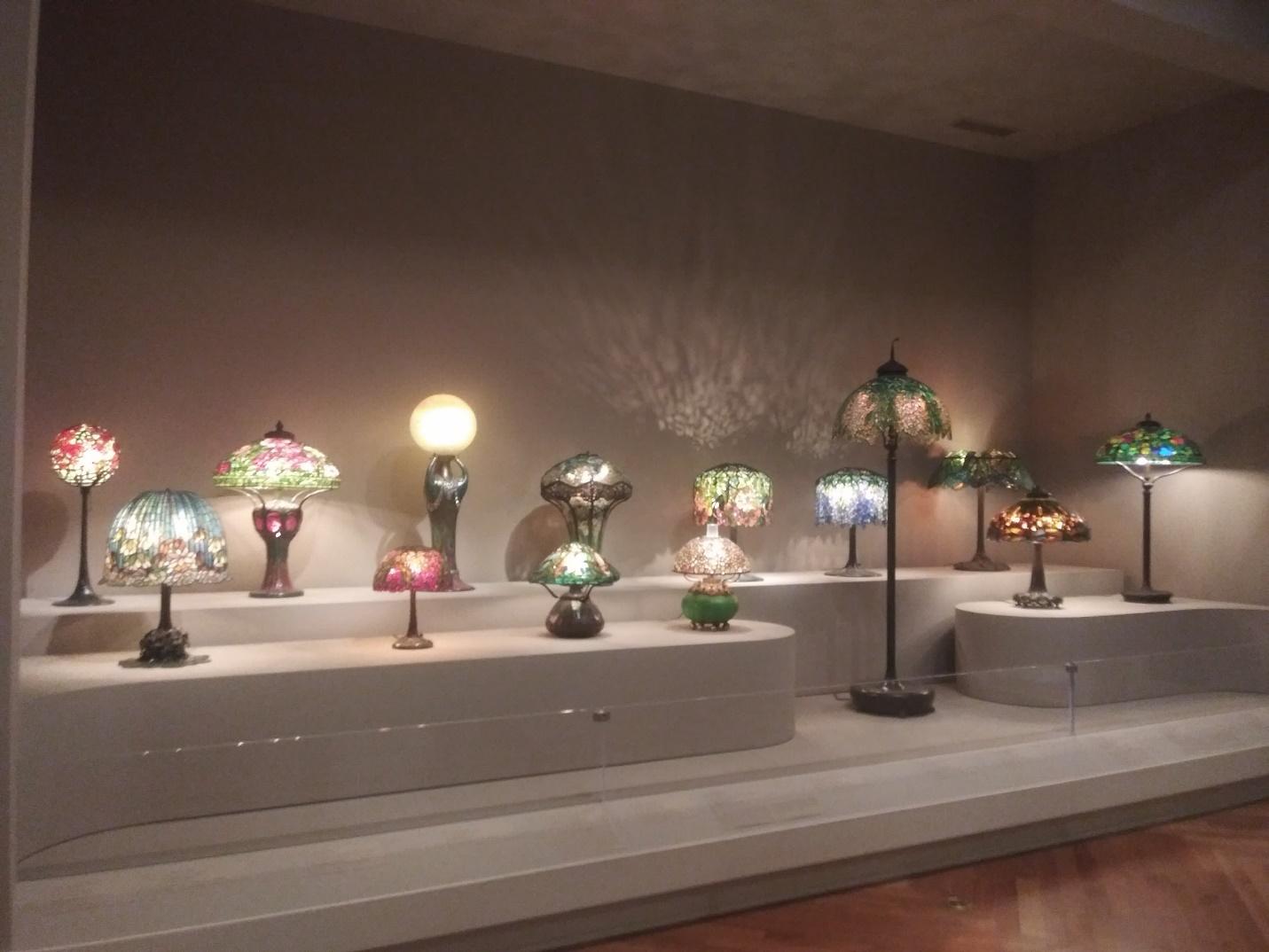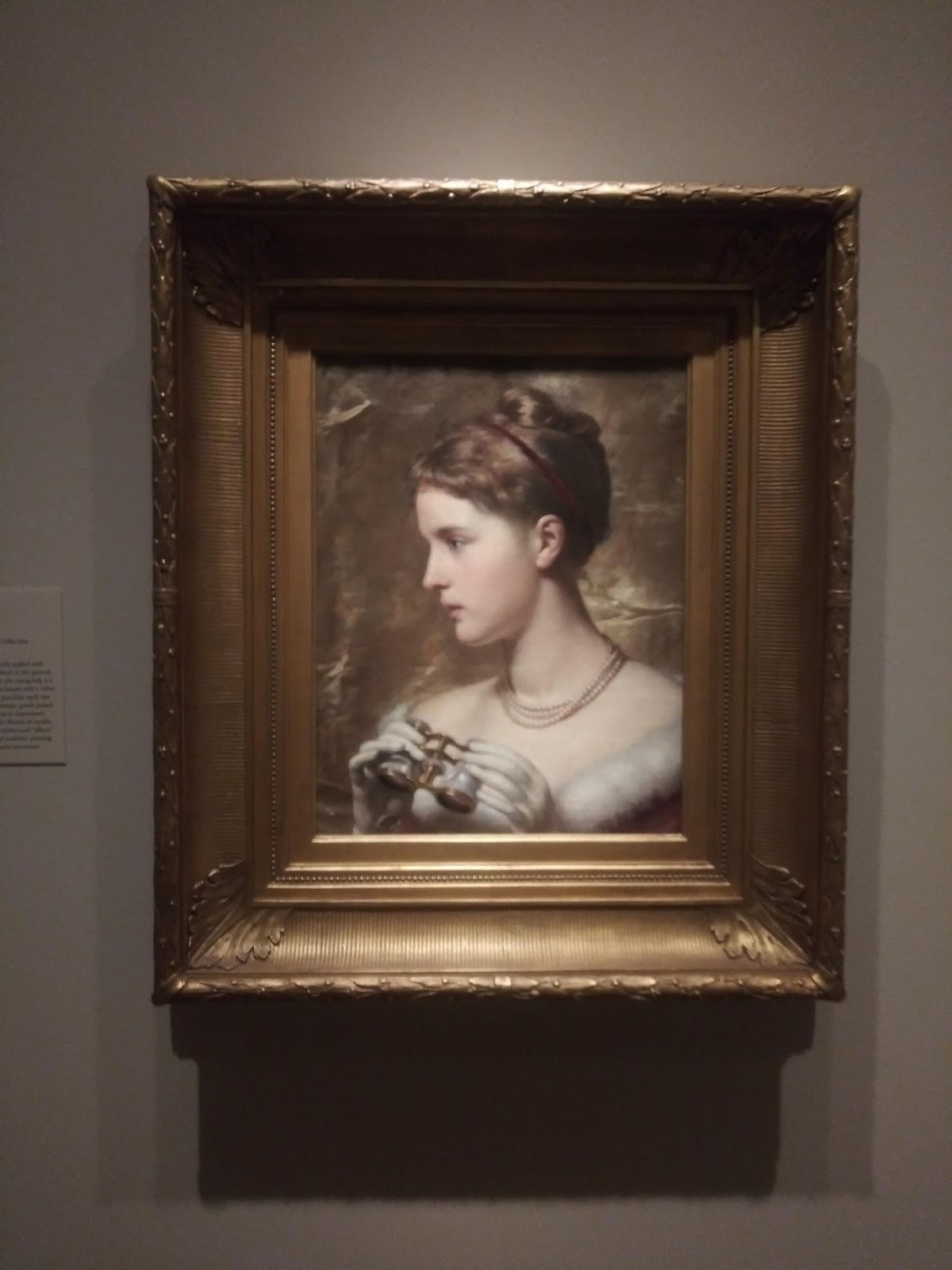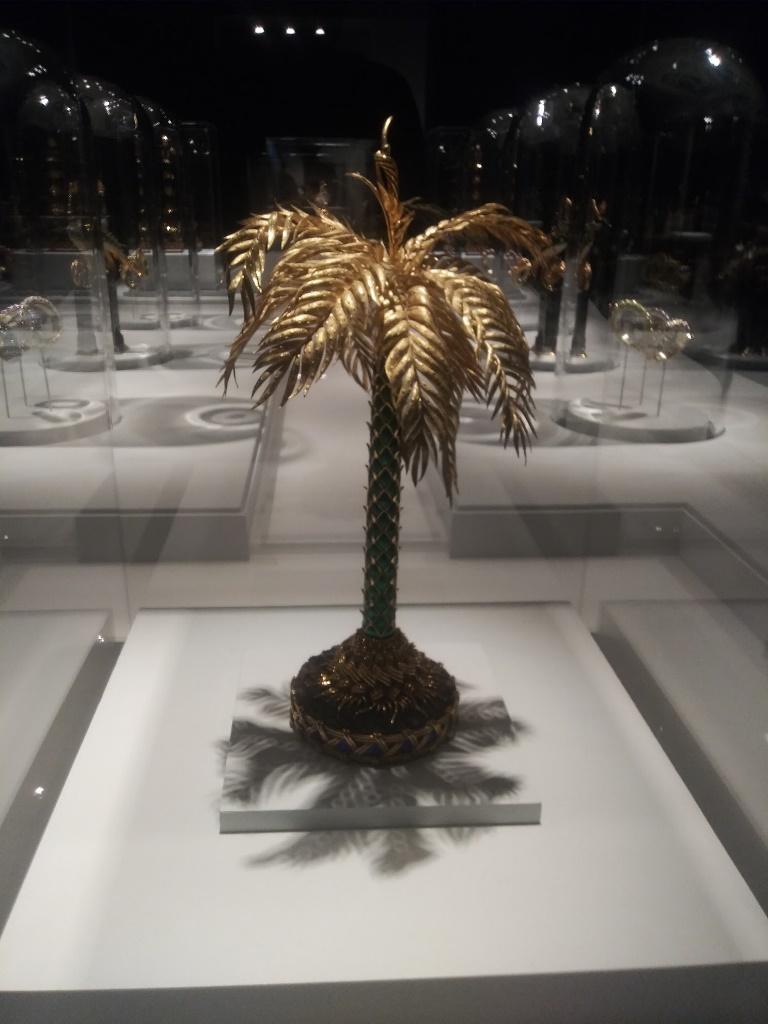Painting a Picture of the VMFA: Why Every Honors Student Should Visit
By Ashley Hagan

Growing up in Henrico, I've visited the VMFA several times over the years and it never gets old, just like the timeless art lining the walls in ornate frames and glass cases. The museum is large enough that you can visit several times and never see the same artwork twice. Winding between different exhibits, you can lose track of time as ancient Egypt fades into the Renaissance and then into Tsar Era Russia.
Around each corner is something new and exciting. You can get lost and end up in a dimly lit room in the middle of the Byzantine Empire or walk past some white curtains and find yourself on a gray stone staircase looking out over a flickering chandelier and an entrance to the museum. Going down that staircase, incidentally, transports you to another era, making you feel like a character out of an eighteenth-century novel.
Seeing the Terracotta Army in person when it came to the museum in late 2017 to early 2018 remains one of the highlights of my time at the museum. Low lights illuminated rows of life-sized clay figures, warriors, in the large room at the culmination of the exhibit. Before that, the hallways leading to the army were lined with artifacts and replicas from the Qin dynasty and the pits where the Terracotta Army was discovered. I remember my sense of awe at each chariot, pottery shard, and archer. This was just a traveling exhibit, like the current Tsherin Sherpa: Spirits exhibit, but the traveling exhibits can be truly impactful. The VMFA has had some of the best traveling exhibits of any art museum on the East Coast, like the Terracotta Army and like 2011’s Picasso exhibit, which I saw while in elementary school.
If the Terracotta exhibit is my favorite, the Fabergé rooms are a close second. Clearly the highlight of the exhibit, five Fabergé eggs are on display in clear cases offering a 360° view of the eggs and the surprises they contain. Interactive displays line the room to provide more information. The amount of beauty and opulence contained in each unique egg is astounding: diamonds, gold and intricate portraits add detail to the elegant Easter eggs, even the simplest Red Cross egg, which contains several portraits inside.
Another room in the Russian exhibit contains details of the lives of the Tsars, including small photographs of their families, including that of the doomed Tsar Nicholas II. Forever trapped in black-and-white inside gold and glass, the Tsar’s wife, daughters and son look somber. With their dark hair and tragic expressions, Anastasia and Maria seem almost aware of their fates; in 1918, they will be executed alongside the rest of their family by the Bolsheviks.
Watching the portraits throughout the museum, it’s hard not to remember, at least sometimes, that these are all people from the past. These are people who lived and died, perhaps centuries ago, like the soldiers of the Terracotta Army and Emperor Caligula. Some lived good lives, while others may have met gruesome fates, like the last Imperial Family of Russia.
Some people may find the several funerary implements located throughout the museum eerie, especially when you can turn a corner and unexpectedly be face-to-face with one. Such people may wish to avoid parts of the Greco-Roman, Egyptian, East Asian and Renaissance rooms, among others. The beautiful, sometimes haunting portraits are much nicer to focus on and highly thought-provoking.
Watching the portraits throughout the museum, it’s hard not to remember, at least sometimes, that these are all people from the past.

When I speak of portraits, there are many enchanting portraits throughout the museum. Wealthy women can take your breath away in their elegant dresses, and figures from the Revolution can inspire. Alongside gorgeous, serene landscapes, the American wing of the museum on the second floor has some of my favorite portraits, across the hall from the European masterpieces like the Renaissance, the Fabergé collection and the statue of Caligula.
The American wing starts at the American Revolution and continues through the Gilded Age to the modern day, eventually circling back around the more abstract modern art that crosses over to the other side of the museum once more. A Norman Rockwell painting sits on a wall looking back on the calm rooms of the exhibit, near large windows overlooking the outdoor installations on the lawn.
You can spend several hours at the museum without ever getting to the third floor, but I highly recommend it. In the Art Nouveau rooms, amidst the other art, several surfaces are covered with glass and metals like gold and silver, including backlit stained glass windows, statues, and jewelry. Beyond that is a room with a collection of Tiffany lamps which glow through colorful stained glass lampshades, as well as a dimly lit room with black walls with rows of gold and enamel figures in glass cases. My favorite is a black palm tree with detailed, delicate gold fronds from 1961. Also on the third floor are the Southeast Asian rooms, as well as a collection dedicated to horses and hunting. Dogs follow scents and crowds watch races, while in one picture, a woman bests two men at staying on horseback during a hunt.

I cannot discuss the museum without mentioning the lawn outside, complete with several art installations. My favorite has always been the Red Reeds, which return in spring 2022. Also of note is Kehinde Wiley’s "Rumors of War” statue, facing Arthur Ashe Boulevard. With the recent removal of the Confederate monuments along Monument Avenue, Wiley’s statue is more relevant than ever. Even if you don’t spend that much time inside the museum, a good spring or summer day could be spent in part on the lawn, taking in the weather and the art.
For Honors College students, I imagine that the desire to view art is already present in many of you. You have likely had assignments and art classes and family trips to museums. However, in times of stress and long, busy days of classes, homework, and extracurriculars, making the trip to Carytown and the VMFA might not be the highest priority. Yet viewing art (and creating art) can improve creativity and mental health. If you’re at a loss for what to write or draw or do for a project, no matter the subject, taking your mind off it by viewing your favorite exhibit at the VMFA – or better yet, something new – might awaken ideas you otherwise would not have considered. If you’re stressed, depressed, or anxious, viewing art may be able to help your mental health and calm your physical responses to stress, reducing your risk of future health problems.
Going to the museum always creates a sense of awe and timelessness that helps me greatly. I forget about troubles and relax, at least temporarily, as I lose myself in each statue and scene. It’s not a solution by itself, but it can be a part of an aid for mental health. Beyond that, it inspires my work and writing, even if it’s just by tangential associations with people, nature, and history. Sometimes you just need to take a step back away from your work and visit the museum. Find your favorite exhibits. Take some time to consider each artwork or just stare in wonder. Believe me, it will be worth it.
Photos courtesy of Ashley Hagan